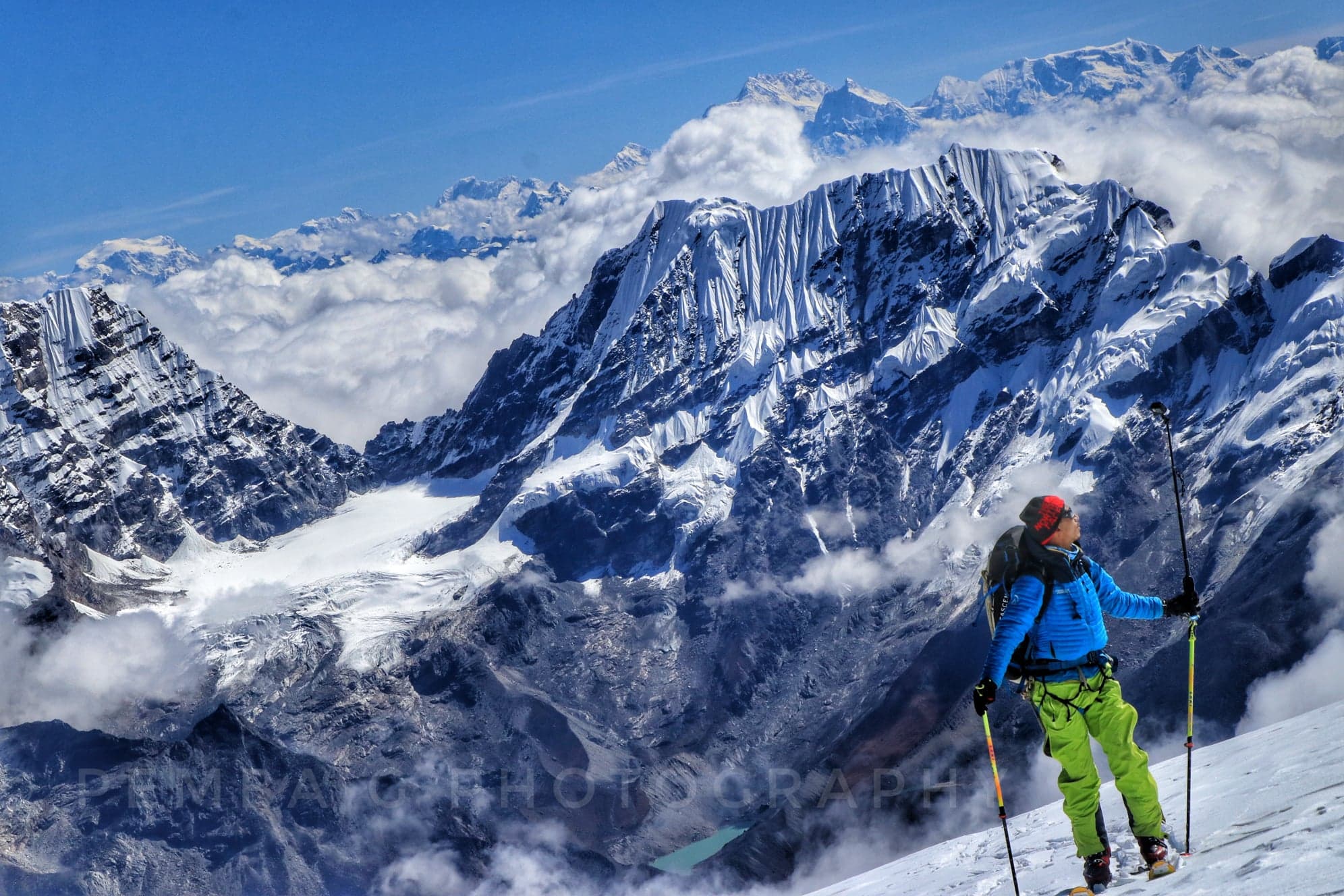Our team is here to support you 24/7. Please feel free to provide your queries. You will get response within few minutes.




Mera Peak and Island Peak via Amphu Labsta Pass 5700m is the ultimate trekking and climbing challenge in the Himalaya of Nepal. Even reaching the top of one of these fantastic peaks is a great achievement.This Trip includes two 6000+meter peaks and one challenging high pass.This exceptional high altitude adventure is packed with an amazing variety of mountains and wilderness valleys, forests and grasslands, lodges and camping: a complete Khumbu experience.
Even though the majority of this expedition is straightforward trekking, it is graded strenuous, as it includes two incredible peaks over 6100 meters, one technically challenging pass, and seven consecutive nights at elevations over 5100 meters. At this altitude, even very basic trails can be a test of endurance. The Mera Peak and Island peak via Amphu Labsta Pass expedition route has been carefully planned and paced. ‘Rest days’ allow time for the body to adjust to the altitude while you practice mountaineering skills with your guide to prepare you for the next objective.
This expedition starts with climbing the least technical, Mera Peak first, followed by the rather tricky Amphu Labsta Pass and then a moderately difficult Island Peak, with its exposed summit.
Mera Peak, standing at 6460 m, is the highest trekking peak in Nepal. Neither too steep nor technically difficult, Mera Peak is a great introductory climb to practice the basics of high altitude climbing skills. This route avoids the steep climb to Zatrwa La pass by making a loop to the south through a beautiful untraveled part of the country and joins the at Kote, allowing time for gradual acclimatization. We fly to Lukla, 2820 m, and trek south to Surke, 2290 m, the same day. We follow the Inkhu River right up to the Mera Peak Base Camp, at the foot of Mera’s north face. The route to high camp goes via Mera La pass. Only the last 30 or 40 meters to the summit require the use of fixed lines. From the summit you get magnificent views of the over-8000-meter-mountains including Mt. Everest, 8848 m, Mt. Lhotse, 8516 m, Mt. Cho Oyu, 8201 m, Mt. Makalu, 8463 m, Mt. Kanchenjunga, 8586 m, to name a few.
Descending from the summit of Mera, the route turns east at the Mera La, into the Upper Hongu Valley. As we follow the valley northward, the rock face of Chamlang towers to the east and Lhotse and Everest are visible directly in front of us. Once we reach the sacred Panch Pokhri lakes, we are about to tackle the toughest objective of the expedition, the Amphu Labsta pass, 5700 m. The succession of ice steps up to the rocky crest call for a fixed line. From the top we have to make a 35 meter abseil to reach fixed lines for the next 300 meters of steep descent on snow and rock.
We re-enter the Khumbu which, after so many days in a wilderness, seems busier than before. We will set up a base camp in the Imja Valley, and prepare to summit Island Peak, 6189 m, which lies close to the imposing south face of Lhotse. After the summit we descend the Everest Trail stopping in the Sherpa capital of Namche Bazaar before completing the circuit trek at Lukla.
We ascend Island Peak via the normal route, directly underneath the imposing south west face of Lhotse, fourth highest mountain in the world. Though lower in altitude than Mera Peak, Island Peak is slightly more challenging. The ascent involves an easy scramble up to a rock ridge and then onto a glacier where fixed lines are used to climb the 45 degree snow slopes leading to the exposed summit ridge. The fabulous summit views include Lhotse, Nuptse, Mt.Makalu and Ama Dablam. We follow the Chhukkung Valley and join the Everest Base Camp trail at Dingboche, one of many Sherpa settlements we pass through on our return to Lukla.
The best season for Mera and Island Peak Climbing is from March to May (Spring) and from September to November (Autumn). However, the winter is also a great time to climb if you are well prepared for the cold weather. In the crisp and cold month of December the views of the mountains are crystal clear and there are fewer tourists around. The duration of the Mera and Island Peak Climb can be lengthened or shortened according to your preference. Expedition High Mountain will arrange every detail of your Mera and Island Peak Expedition; lodge accommodation, food, as well as all the necessary climbing and camping equipment.

25 Days Trekking / Peak Climbing / (SKILL LEVEL: extreme)
Day 1 :Arrive in Kathmandu (1,300m/4,265ft)
Day 2 :Preparation Day in Kathmandu 1300m
Day 3 :Fly to Lukla, and trek to Paiya (Chutok),(2,730m/8,956ft) 3-4 hrs
Day 4 :Trek to Pangoma, (2,850m/9,350ft) 5-6 hrs
Day 5 :Trek to Nigmsa (2,745m/9,005ft) 4-5 hrs
Day 6 :Trek to Chhetra Khola, (3,122m/10,242ft) 7-8 hrs
Day 7 :Trek to Kothe, (3,600m /11,811ft) 6-7 hrs
Day 8 :Trek to Thangnak, (4,356m/14,291ft) 5 hrs
Day 9 :Trek to Khare, (5,045m/16,551ft) 4 hrs
Day 10 :Acclimatization Day in Khare /Preparation day
Day 11 :Trek to Base Camp (5,350m/17,552ft) 4 hrs
Day 12 :Trek to High Camp, (5780m/18,963ft) 4 hrs
Day 13 :Mera Peak (6,46m/ 21,246ft) Ascent and Decent to Kongme Dingma (4,900m/16,076ft) 10-12 hrs
Day 14 :Reserve Day
Day 15 :Trek to Hongu river Seto Pokhari (5,000m/16,404ft) 4-5 hrs
Day 16 :Trek to below the Amphu Labtsu high camp (5,400m/17,716 4 hrs
Day 17 :The Amphu Labtsa (5,780m/ 18,963ft) and trek to Imja Valley 10 hrs
Day 18 :Trek to Island Peak Base Camp(5,200m/17,060ft) 2 hrs
Day 19 :Base Camp to Summit 6,189m/20,305ft and descent to Chhukung (4,710m/15,452ft) 10-12 hrs
Day 20 :Trek to Tengbuche, (3,864m/12,677ft ) 4 hrs
Day 21 :Trek to Namche (3,450m/11318ft ) 3hrs
Day 22 :Trek to Lukla (2,810m/9,219ft)
Day 23 :Fly from Lukla to Kathmandu 1300m
Day 24 :Free Day in Kathmandu
Day 25 :Depart Kathmandu.
Remark: – Please note that cloud and turbulent weather is a regular phenomenon in the Himalayan range. It is thus possible that domestic flights from Kathmandu to/from Lukla may be delayed for a few hours or even canceled for a day or more. Fortunately, this does not happen frequently during the high seasons of March to May or September to November: but you need to plan for this possibility.
As a safeguard, we recommend that you add on a couple of extra days after your trek before you fly from Kathmandu to your onward destination.
Expeditions High Mountain has compiled a list of essential equipment, personal medical provisions, and a summary of medical conditions likely to encounter during high altitude mountaineering. We hope this helps you in your preparation for the expedition. You might already have most of the equipment anyway but it never hurts to have a checklist at hand. A basic rule of thumb to keep in mind: carry a spare of every piece of equipment necessary for survival whenever possible. And think broad: Sunglasses might sound like a trivial item but if you lose or break your pair on the mountain, you will suffer from snow blindness which can be fatal high up on the mountain simply because you’ll be unable to descend – carry a spare. And equally important, make sure you are familiar with all of your equipment, especially new pieces. You should be able to use everything under even the most adverse conditions.
This list should be considered as an essential summary and, naturally, it might be incomplete. Expeditiousness are encouraged to conduct further study and practical exercises to familiarise themselves with the equipment. You should also be familiar with the medical terminology and have a basic understanding of medical conditions related to high elevation, cold, wind, excessive sun radiation as well as injuries likely to sustain in the outdoor situations, particularly in high and remote mountainous areas. While most of this will only be relevant in emergency situations – which we all hope never to encounter –it’s better to come over-prepared; your life might depend on it.
___________________________________________________________________
___________________________________________________________________
For undergarments we recommend Merino wool – or one of the new mixtures between Merino and synthetics (Icebreaker and Odlo are two highly recommended brands).Quality as well as comfort are essential in extreme conditions so don’t look for cheap options. Merino wool is popular because of its softness and breath-ability while providing excellent insulation. It can absorb water very well and takes moisture away from the body which keeps you dry and warm. It has natural antibacterial properties, so it stays usable for much longer.
______________________________________________________________________
Note: Your clothing should be kept dry using waterproof stuff sacks (preferably made of Cordura) or alternatively bin-liners or large plastic bags although they are less rugged.
______________________________________________________________________
_____________________________________________________________________
______________________________________________________________________
_____________________________________________________________________
_____________________________________________________________________
Rucksacks and Travel Bags:
Sleeping Gear:
Note: Your sleeping bags should be kept dry using a waterproof stuff sack
______________________________________________________________________
Useful Medication: (Always contact your doctor if you have any questions; use alternatives in case you have intolerances for the suggested medication)
Note:Do not bring sleeping pills. They are respiratory depressants which is problematic at high altitude.
______________________________________________________________________
Our skilful cooks will prepare 3 delicious hot meals and plenty of drinks each day in base camp, as well as in camp 2 on the mountain. These meals will consist of soup, local cheese & sausage, biscuits, dried noodles, potatoes, rice, porridge, butter, dried and tinned vegetables, fruit, meats, and fish, tea with milk and sugar, powdered juice drink, and drinking chocolate. Our Sherpas will be carrying this food to the higher camps.
We ask members to bring only 5 dehydrated meals (freeze-dried dinners) for their summit attempt. On summit day, you will be at high elevation and you will be affected by the altitude with very limited appetite so it is important to have flavours you like best and you perceive as pleasant even when you are not hungry.
We cannot cater for specific personal and uncommon foods and flavours. If you have any unusual, non-standard or specific personal, cultural or religious dietary requirements, which can only be satisfied with imported product, we ask you to bring your own imported daily snack and energy foods.
We do not provide “snack” food such as chocolate or energy-bars. We ask that you bring or buy your own snacks or daily cold energy food in Kathmandu or in your home country. Because of the high degree of physical exertion, proper nutrition is very important and you might want to plan food supplementation carefully. From our experience 3-6 kilos/6-12 pounds of additional food is a sufficient amount.
A growing variety of imported foods such as European and American cheeses, chocolates, biscuits, cookies, nuts, and locally made power-bars are now available in Kathmandu, at reasonable prices. However, many imported brands and specialized items may not be available. If you want these items, you must bring them from your home country. Many of our members, especially Europeans and Australians with small baggage allowances, now purchase their daily snacks in Kathmandu (or at least parts of them). Our schedule in Kathmandu allows sufficient time for shopping.
______________________________________________________________________
Note: This is not an exhaustive list. Please contact us for any other equipment concerns and suggestions. We are happy to discuss these in detail.
______________________________________________________________________
The primary concern of mountaineers as altitude increases is the decrease in partial oxygen pressure. At higher altitude, the density of the gases to comprise our air decreases. Partial pressure is (hypothetical pressure) of a gas in a mixture of gases if the same space was only occupied by that gas. A decrease in partial Oxygen pressure means that there is less Oxygen is any given volume of air.
There is a fine balance between the gas pressure in your blood (called Blood gas tension) and the outside world, which allows your lungs to absorb the oxygen and deliver it to your organs. The outside pressure decreases with altitude, while the internal pressure remains constant.At about 9000m you will not be able to absorb any oxygen at all with a predictable outcome. Our body has evolved at low altitude, where it functions perfectly and it doesn’t at high elevation. The human body has, however, phenomenal ability to adapt given appropriate conditioning and time, which is called acclimatization.
Low levels of oxygen in the blood can cause number of conditions which is usually summed up as Acute Mountain Sickness (AMS). This is easily treatable and reversible if acted upon quickly (the course of treatment is to reduce altitude as soon as possible). But it can lead to more serious (and potentially lethal) conditions such as High Altitude Celebral Edema (HACE) and High Altitude Pulmonary Edema (HAPE). Furthermore, a low level of blood oxygen can lead to thermal inefficiencies in your body causing frostbite and hypothermia. Have a look at http://lavablau.com/general/acute-mountain-sickness/ for an introduction to the current research on high-altitude conditions and some links to more profound sources.Other conditions caused by the effects of high altitude are thrombosis and embolisms.
Less serious but not to neglect: At high elevation due to lower UV absorption by the atmosphere and reflections from the snow there is a high risk of sunburn. Since you will not be able to stay out of the sun completely, this can escalate to a serious situation. Always shield your skin as well as possible from the sun and use plenty of sunscreen. Other more obvious hazards include broken bones due to falls, avalanches, ice and rock fall etc. but you should have come across those in your previous mountaineering activities anyway.
Again, this is not an exhaustive list but we hope it provides a loose guideline for your preparations. Do as much background research as possible – it never hurts to come over-prepared. And, of course, we are always happy to help so just give us a shout if you have any questions, comments or concerns.Happy preparations.